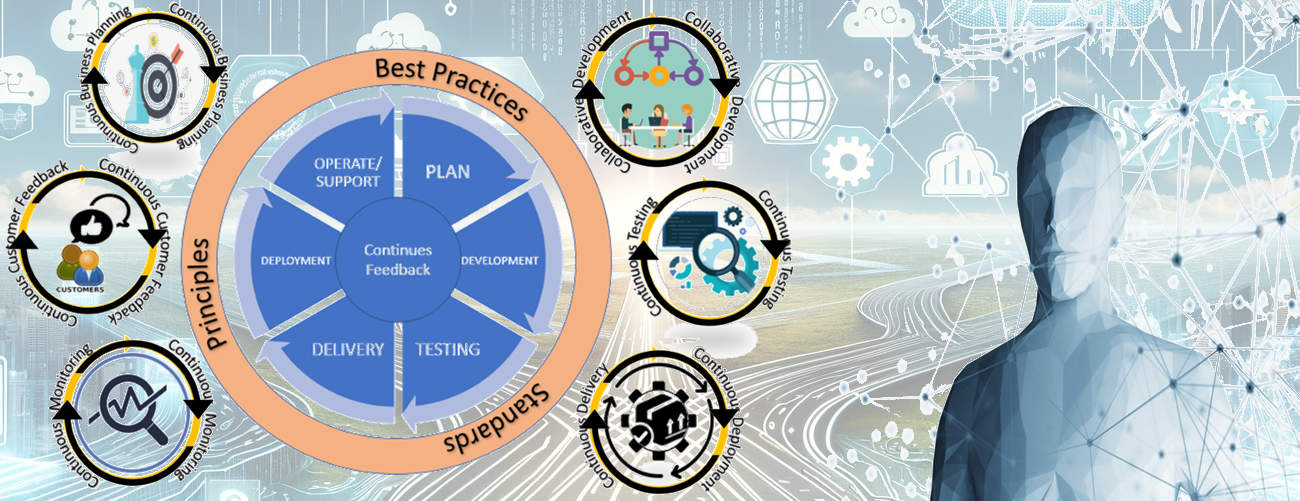Navigating the Shift: Journey from Software Configuration Management to DevOps, and Beyond
In recent times, we've witnessed a significant metamorphosis in the domain of Software Configuration Management (SCM). Originally concentrating on the management of software alterations, SCM now plays an integral role in the broader framework of DevOps. This development marks a notable departure towards a more synergistic and productive model in the sphere of software creation and operational strategies.
Let's explore this journey, starting with the early days of SCM:
Stage 0: Not too distant history
In its early stages, SCM was principally equated with version control. This era utilized tools such as CVS and SVN, primarily for tracking modifications in source code.
As the field matured, SCM expanded to encompass a wider array of tasks. This included not only managing changes and handling builds but also orchestrating software code lines for concurrent software development and supervising both release and change procedures. This era saw the emergence of integrated solutions like PVCS, IBM Rational ClearCase, and Microsoft TFS/Visual Source Safe.
Stage 1: Agile and Emergence of DevOps
Then, comes the Era of Agile and Emergence of DevOps. The beginning of Agile methodologies marked a significant turning point and a paradigm shift, closely aligning SCM practices with the software development life cycle. This integration was tailored to meet the needs of Agile's characteristic iterative and incremental development approach.
With the rise of DevOps, there was a critical transition in SCM. It broadened SCM's scope beyond traditional confines, merging release management and code management into a more extensive operational context. This shift encompassed practices such as Continuous Integration (CI) and Continuous Deployment (CD), effectively eroding the conventional divisions between code development, build management, release management, infrastructure management, and operational processes. This evolution also shifted the debate about whether SCM is a subset of release management or vice versa, and this was the time when the lines between code, operations, and infrastructure began to blur.
Stage 2: The Cloud Computing Catalyst, Era of Infrastructure as Code (IaC) and Modern Software Configuration Management
Traditional Software Configuration Management practices, including build scripting and the management of infrastructure and middleware configurations, were already well-established. Yet, the advancement of on-premises virtualization technologies, followed by the arrival of cloud computing and the complexities of distributed systems, initiated a significant shift. This transition favoured a more scalable and efficient approach to infrastructure management, paving the way for the development of Infrastructure as Code (IaC) and Orchestration concepts. IaC, now a pivotal aspect of DevOps, approached the establishment and evolution of infrastructure with the same precision as early SCM approaches to software code management. Today, tools and technologies like Terraform, Ansible, Dockers, and Kubernetes have revolutionized infrastructure management, enabling the infrastructure to be provisioned and orchestrated through code.
The Current Stage:
Now, let me conclude, in this new contemporary tech landscape, configuration management has evolved and encapsulated both software and infrastructure domains, blurring the lines between Development and Operations. The foundational principles of SCM, such as version control, change control, and automated processes are now seamlessly applied under the umbrella of DevOps. The integration of DevOps has redefined the scope of SCM, rendering it an indispensable element in the management of both software and infrastructure, and paving the way for more streamlined, scalable, and robust IT methodologies.
The Future:
Peering into the horizon, the next chapter in the SCM-DevOps saga seems primed for a leap into another shift. Imagine the use of Artificial Intelligence and Machine Learning in the DevOps. We're talking about a shift from reactive to predictive management, where AI-driven insights could preemptively smooth out kinks in software development and operations. It's like having a crystal ball but with algorithms and data models. Then there's the whole DevSecOps movement. In this upcoming era, security isn't just a checkpoint; it's part of the journey from the get-go. Not the least to mention are the blurring lines between SCM-DevOps and Site Reliability Engineering, which focus on monitoring, reliability, scalability, and performance.
Lastly, I will tease with the topic of NoOps, a subject we will cover another day.


